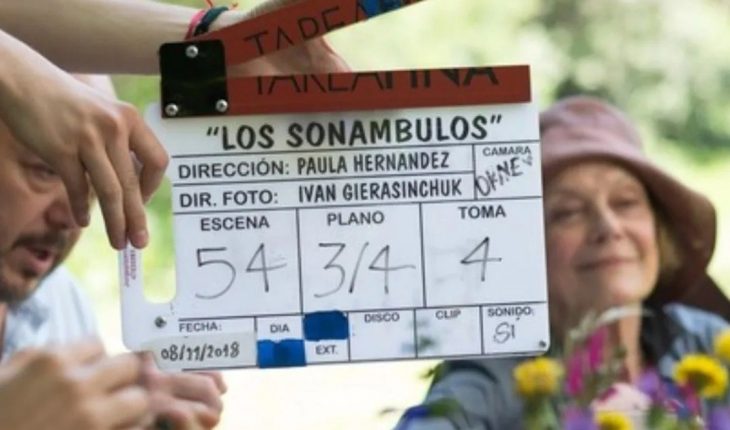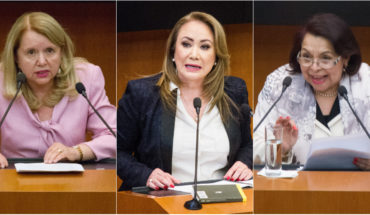“Did you realize there are a lot of movies of us releasing right now?” with that question as a trigger, and “medium as a hashtag,” a group of directors found the world under a social and gender look. “That’s when we said good, what do we do with that?” Thus was born Cartelera Feminista, the group composed of Sabrina Bianco, Natalia de la Vega, Josefina Recio, Lucía Vassallo, Ana García Blaya, Karina Sama, Susana Nieri, Marilina Giménez, Luciana Bilotti, Carolina Alvarez, Vanesa Pagani, Valeria Pivato, Amparo Aguilar, Macarena Garcia Lenzi, Valentina Llorens, Alejandra M Marino They carry as their flag a clear and concise mission: “For more cinema made by women and dissents”.
Today they have thousands of followers on social networks, where they take the opportunity to promote all the works: “We realized that we could broadcast our films collectively and together, being able to accompany each other. The other’s audience is not something to steal, but something to build for everyone. We were organizing ourselves in communication, dissemination, distribution, and also thinking that there is particular cinema that we make, thinking about the world in which we live with a transfeministic perspective”, remember, in dialogue with this medium.***For the first time in the history of the Oscars, this year two women were nominated within the category ‘Best Direction’: Chloé Zhao and Emerald Fennell. Yes, the record was two women. Far from being a coincidence, this scenario is repeated in all awards awards, and speaks of a reality that goes far beyond that: the lack of representation, space and visibility of women and dissents in cinema. It was women like Agnés Varda, Alice Guy or Lois Weber who made history as pioneers worldwide. On a short historical tour, in Argentina we can name Emilia Saleny (“Clarita’s Handkerchief”), Marie Louise Alemann (“My Mom’s Car”), Narcisa Hirsch (“Patagonia”), Maria B. de Celestini (“My Right”), Renée Oro (“Argentina”), Vlasta Lah (“The Furies”), Lita Stantic (“A Wall of Silence”) or Maria Luisa Bemberg (“Camila”).
Maria Luisa Bemberg
“It was never enough for me to live for which I had been programmed. Being a woman in her house, a good mother, a good wife, a woman who took care of her physical appearance, mundane, always produced me as a great void,” Bemberg said, as the book “Women, Camera, Action”, Rolando Gallego and Catalina Dlugi collects. Although all these women made their way to new generations, such as Lucrecia Martel, Albertina Carri or Ana Katz, the path was not easy: they had to make their way into an androcentric system that continues to this day. Let’s go to the numbers: according to a report published by INDEC in 2018, women account for 61% of the total degrees in audiovisual arts; however, only 38% hold jobs in the audiovisual industry. The Filmmakers Collective indicated that 70.96% of films nationwide in 2020 were directed by men, while 21.50% by women and 7.52% mixed. In turn, women are team heads in the feminized areas and not in the spaces of power. 85% are team leaders in makeup, 37% assistant manager, and 12% in the direction of photography. Wages, on the other hand, are lower than the average for males, by 3.64%. Transvestite, trans, non-binary people do not have statistical data.
“Two problems come together that need to be analyzed with a gender perspective: the lack of space that we have in the audiovisual and labor industry in general,” they analyze from Feminist Poster and continue: “You have to think that’s what bothers us, the form of patriarchal construction that we have had, and how we can find ways to start changing certain things.” For that it is necessary to change the ‘look’. This concept, worked by authors such as Laura Mulvey or Begoña Siles Ojeda, involves nothing more or nothing less than the way we understand the world, how we apprehend from what we see on screen and how we naturalize it as part of our social scheme. “Cinema, as one more cultural apparatus within a bourgeois society of patriarchal and androcentric cut, has helped since its discourse to create the model of imaginary representation that Western society has about the concept of ‘woman’ and ‘the feminine,’ says Siles Ojeda.” We were always represented and narrated by a single glance. The way of apprehension of the world is given by what we see on the screens, and what we see is tremendous. The imaginary of what we can be women and girls is built from what hegemonic masculinity imagines we should be,” the filmmakers discuss. That’s why it’s key to introduce the idea of ‘gender perspective’ into the discussion. What is it and how to put it into practice? “We look at each other, we recognize each other, and we begin to see each other, that subjectivities we consider ourselves, and to rethink ourselves outside the patriarchal structure. Which places were assigned to us by patriarchal culture we are willing to assimilate and which places we did not,” they discuss.
“We have to meet and rethink ourselves outside the patriarchal structure,” they say from Cartelera.
The Bechdel test is the most popular method for assessing the gender gap in films in general, which involves three basic criteria: that at least two female characters appear, that they talk to each other and that it is not about men. Directors look for the representation and gender quota in their films: “It’s looking from the know-how, looking for other forms, other perspectives, something that identifies us, another way of framing,” they analyze. A good way forward on this path is the implementation of public policies that guarantee the plurality of voices and the opportunity to have new looks; as highlighted from the Federal Feminist Audiovisual Front (FAFF): “We call for the urgent implementation of the 50/50 quota in the results of the calls as well as the future implementation of parity policies and incentives in all INCAA public resources.” As long as we’re writing, narrating, counting, watching, with a camera, all of that is going to be crossed by the gender perspective, it’s the exercise we’re in and where we expect you to find all of them within the industry. It’s something that goes beyond film, it’s something that has to be in art in general, we advocate for that,” they say from Cartelera.
Among the first titles that were part of the catalog of ‘Feminist Poster’ were “La botera”, “La protagonista”, “La good intentions”, “Un banda de chicas”, “Malamadre”, “La casa de Argoello”, “Los sonámbulos” “Stone paper and scissors”. During the last few months they added films such as “Andrés Carrasco: Disruptive Science”; “Camping”, “The Dinosaur Egg”; “Raindrops”, “Home”, “Line 137”; “Alptraum”; “Canela”; “In the name of flower”, “The Bride of the Desert”; “Make life”; “The ones who come back” and more.” We want to break this verticalist movie thing, not to be a player of that, to start working and to try. Our films have a feminist view of different themes, they are made by us and that looks. Some go more for girl power, others for the quota, others for telling the story of a girl; but they are all told with this intention,” they reflect.***United and organized. In their book Gallego and Dlugi recall other groups that made history in the fight for rights: Women and Film, Audiovisual Women (MUA), the Argentine Association of Audiovisual Art Directors (ADDA); or ACTION Women of Cinema. Collective work in the film field was and is essential to achieve concrete steps towards gender equality in the sector, and even more so in pandemics.” This space was key as a tribe during quarantine. He allowed us to do federal networks, we’re filmmakers all over the country. Many girls published their debut opera when we first met, so many are thinking about their second film. If there is a network of containment or belonging it is more likely to be able to do it, there is where to lean and where to follow,” they count from Feminist Poster. His next projects include stories about maternity and migration, masculinities, postpartum and more.
Throughout March they participate in #VecineVecine cycle, organized by Lumiton Usina Audiovisual, where you can watch all your movies online and for free; In addition, you can participate in talks and events together with the different directors. “In the spaces when we go they always select some movies that interest them. This is the first time we can make a joint catalog, and it is a year since we are formed as a grouping, then it has something symbolic that is good too,” they say. Networking, debate, creation, new paradigms. What did they always tell us in the movies? Is there another way to look at things? Perhaps it’s time to reflect on those questions, and understand that women and dissents have stories to tell.
In this note:
Film
Women’s cinema
Feminist cinema
Feminist Billboard
Oscar





